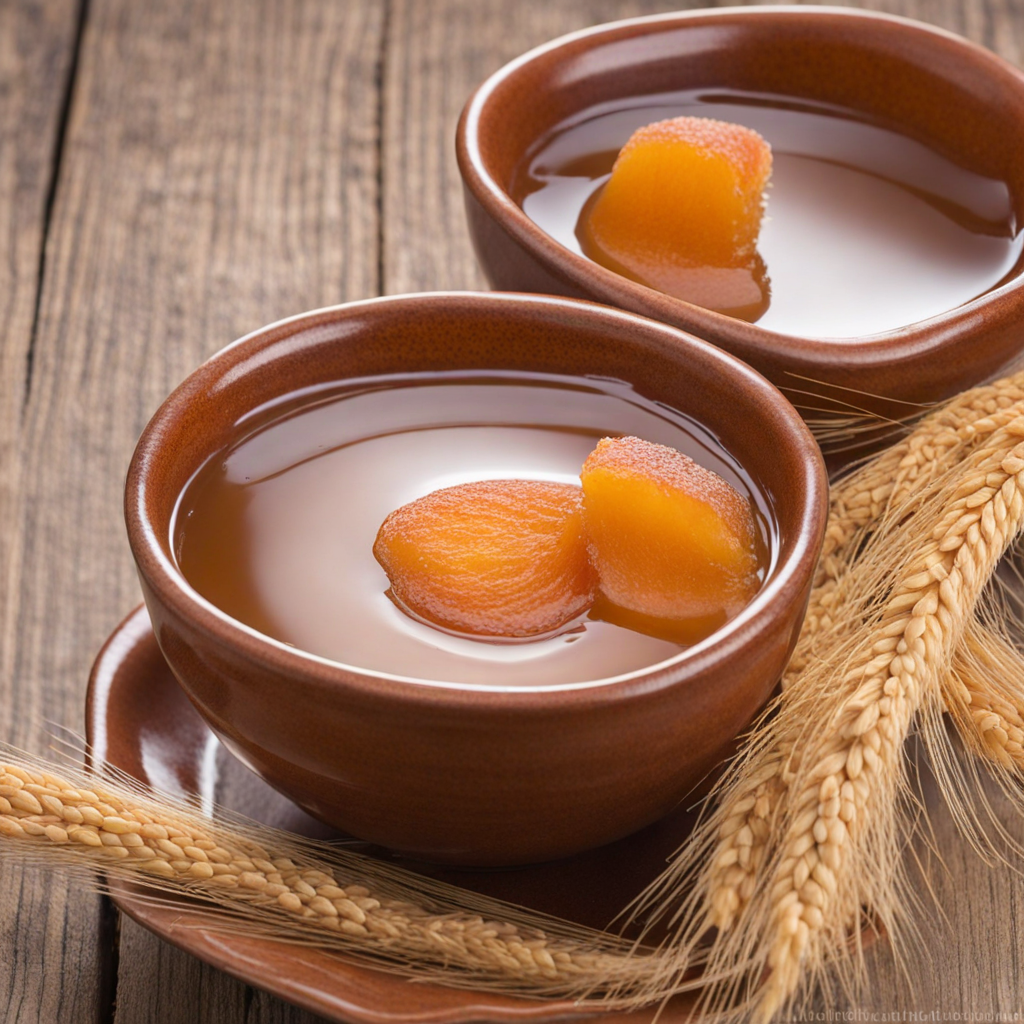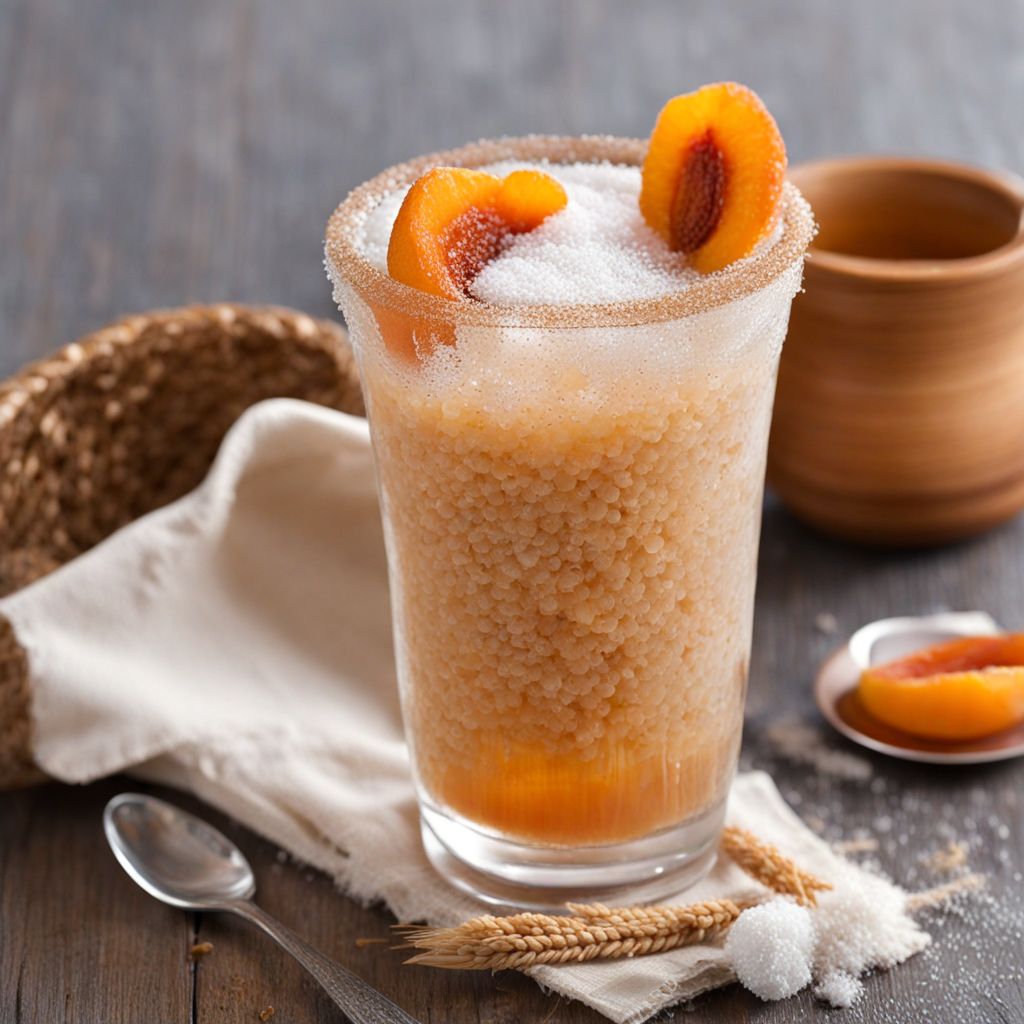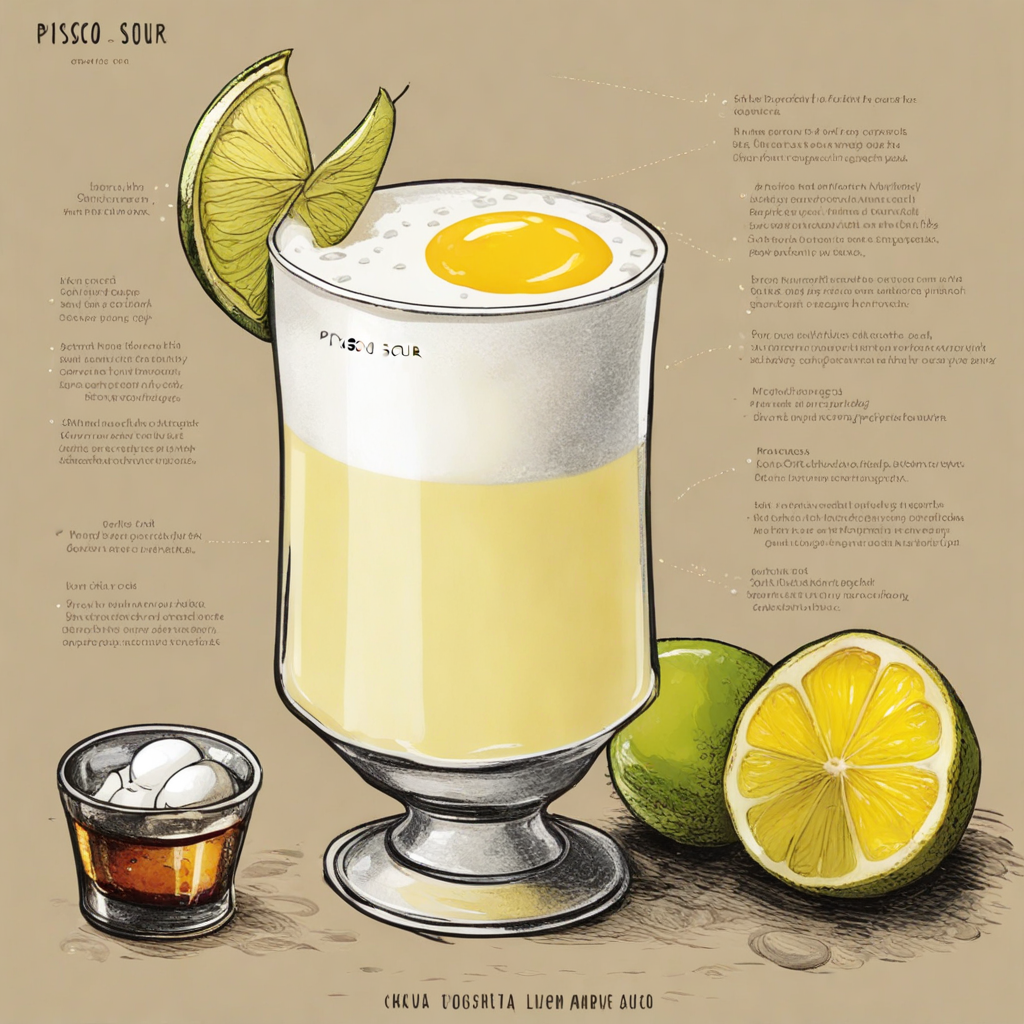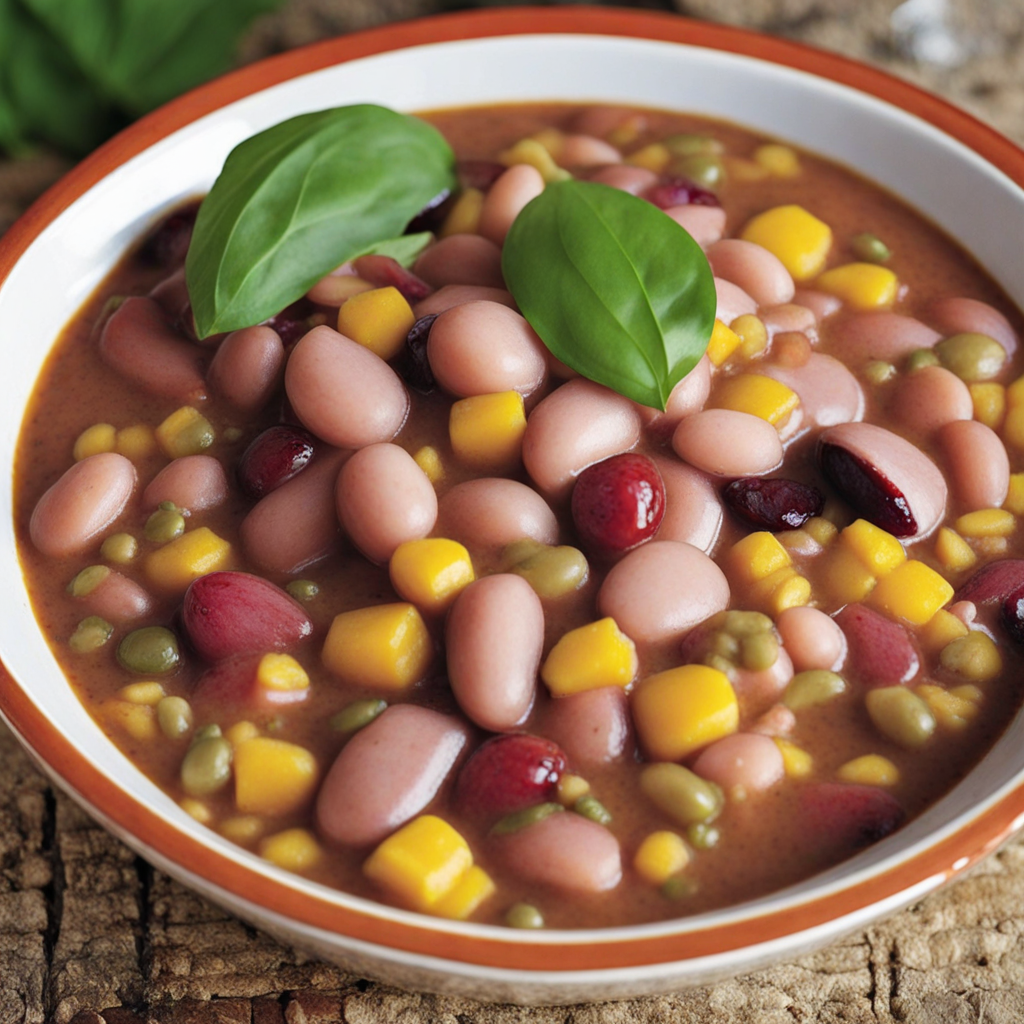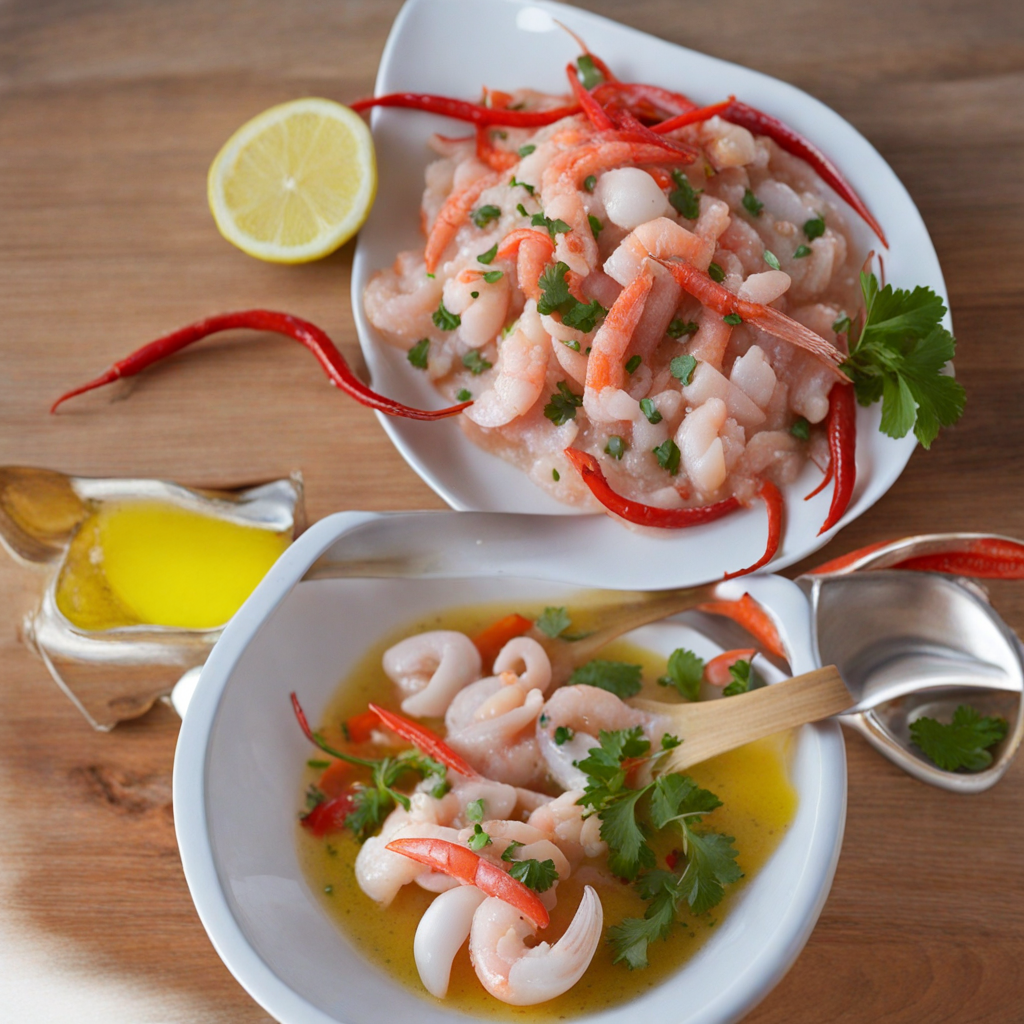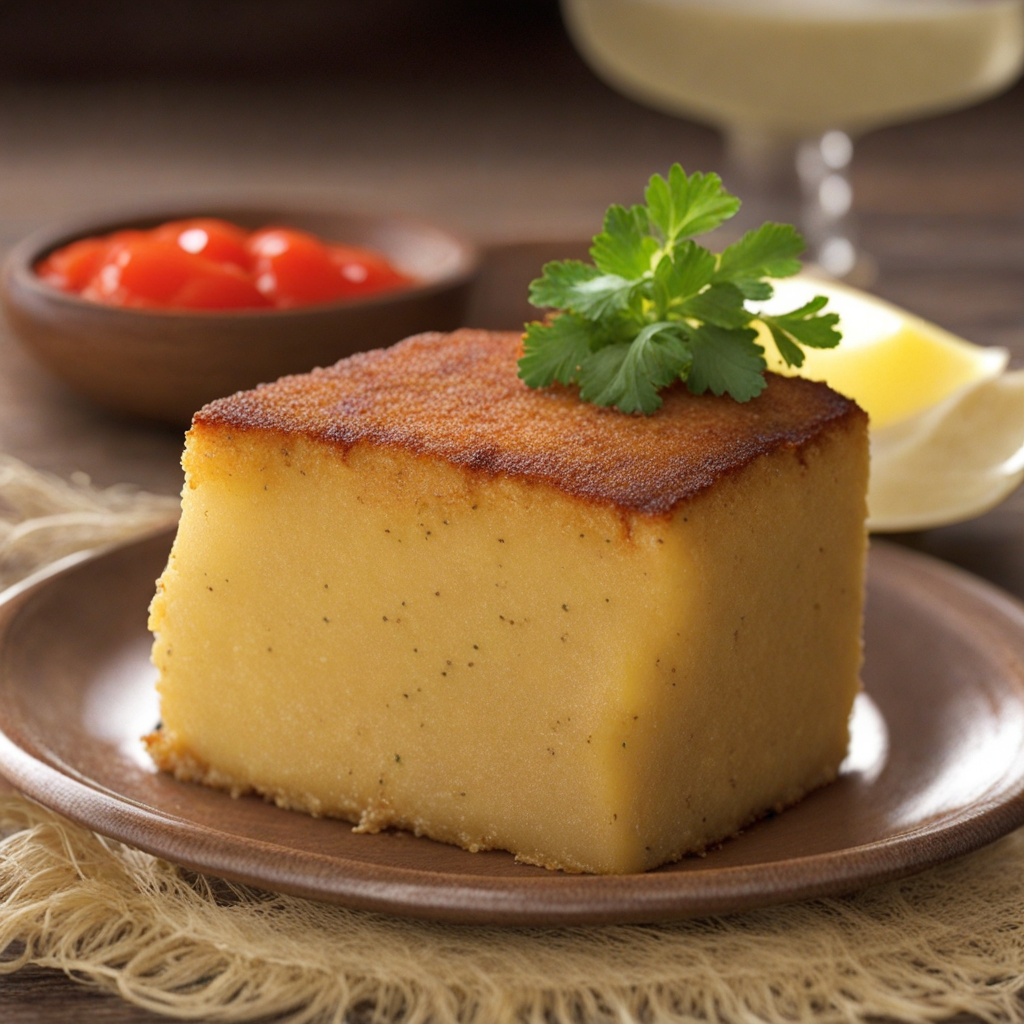Mote con Huesillo
Mote con Huesillo is a delightful traditional Chilean dessert that beautifully combines flavors and textures, making it a must-try for anyone looking to explore new tastes. At its core, the dish consists of sweetened dried peaches, known as "huesillos," which are rehydrated and cooked with sugar and cinnamon to create a syrupy concoction. The peaches are plump and juicy, offering a luxurious mouthfeel that pairs perfectly with the accompanying components of the dish. Alongside the huesillos, you will find "mote," which is made from cooked wheat grains. The wheat provides a chewy texture that contrasts with the softness of the peaches. This unique combination is served chilled, often in a tall glass, and is typically garnished with a sprinkle of cinnamon or a dash of lemon juice to enhance the flavors. The sweet syrup, infused with the essence of the peaches, seeps into the mote, creating a harmonious blend of sweetness that is both refreshing and satisfying. Mote con Huesillo is more than just a dessert; it is a cultural staple in Chile, often enjoyed during the summer months or at street fairs. It embodies the essence of Chilean culinary traditions, showcasing local ingredients and reflecting the country’s agricultural heritage. The experience of savoring this dish is enhanced by its vibrant presentation and the joyous atmosphere in which it is often consumed, making it a perfect choice for those wishing to immerse themselves in the flavors of Chile.
How It Became This Dish
Mote con Huesillo: A Refreshing Taste of Chile’s Cultural Heritage #### Origin Mote con Huesillo, a cherished Chilean beverage, is a delightful concoction that marries the sweetness of dried peaches and sweetened barley with the invigorating touch of a homemade syrup. The origins of this refreshing drink date back to the colonial period in Chile, when Spanish settlers introduced various agricultural practices and ingredients from Europe. Among these was the cultivation of peaches, which would eventually play a pivotal role in the creation of Mote con Huesillo. The word "mote" refers to the hulled barley that has been boiled until tender, while "huesillo" translates to "little bone," a term that refers to the dried peach. The dish’s roots can be traced to the indigenous Mapuche people and their use of barley as a staple food. The combination of these elements symbolizes a confluence of indigenous and colonial influences, representing a unique aspect of Chilean culinary history. #### Cultural Significance Mote con Huesillo is more than just a thirst-quenching drink; it is a cultural emblem of Chilean identity. Often enjoyed during the warm summer months, particularly during the Fiestas Patrias (Independence Day celebrations) in September, it has become a symbol of national pride. Street vendors selling Mote con Huesillo can be found at fairs, festivals, and parks, making it an accessible treat for both locals and tourists alike. The drink also carries social significance, often enjoyed in communal settings. Families and friends gather to savor Mote con Huesillo, creating bonds over shared experiences. This communal aspect reinforces its role as a traditional beverage, linking generations through the shared enjoyment of a beloved national dish. #### Ingredients and Preparation The preparation of Mote con Huesillo is relatively simple, yet it embodies a rich tapestry of flavors and textures. The key components include: 1. Mote (Barley): The barley is soaked overnight and boiled until it reaches a chewy consistency. This grain not only adds texture but also provides a source of energy, making the drink particularly refreshing after a day in the sun. 2. Huesillo (Dried Peaches): The dried peaches are rehydrated in water and sugar to create a sweet syrup. The peaches not only contribute a sweet flavor but also a fruity aroma that enhances the overall drinking experience. 3. Syrup: The syrup is made from water, sugar, and sometimes flavored with cinnamon or lemon zest, adding depth to the drink's sweetness. The assembly of Mote con Huesillo is a joyous process. The cooked barley is placed at the bottom of a glass, followed by the sweetened peaches, and finally topped with the syrup. The result is a visually appealing drink, with the golden hues of the peaches contrasting beautifully with the creamy barley. #### Development Over Time As Chilean cuisine evolved, so too did Mote con Huesillo. In the 19th century, the drink began to gain popularity beyond the rural communities where it originated. Urbanization during this period saw a migration of people to cities, where street vendors began selling Mote con Huesillo, making it more accessible to a larger population. The drink was quickly embraced by the burgeoning working class, becoming a staple of street food culture. By the 20th century, Mote con Huesillo had firmly established itself as a national delicacy. During this time, it also began to appear in restaurants and cafes, transitioning from a humble street food to a celebrated dish. The drink also found its way into Chilean literature and music, further solidifying its place in the national consciousness. It became a symbol of summertime nostalgia, evoking memories of childhood and family gatherings. The globalization of food culture in the late 20th and early 21st centuries brought new attention to traditional dishes like Mote con Huesillo. As Chilean cuisine gained international recognition, so did the drink. Food festivals, culinary competitions, and international events showcased Mote con Huesillo, allowing it to reach a global audience. This newfound fame has led to variations of the traditional recipe, with some chefs experimenting with different fruits, sweeteners, and even alcohol-infused versions, while still honoring the classic preparation. #### Modern Interpretations and Variations In contemporary Chile, Mote con Huesillo remains a staple of summer enjoyment. However, the drink has also seen modern twists that cater to evolving palates. Some vendors now offer variations that include additional fruits like mango or pineapple, while others introduce herbal infusions or flavored syrups to create a more gourmet experience. Vegan and gluten-free adaptations have also emerged, allowing a broader audience to indulge in this traditional treat. Despite these modern interpretations, the essence of Mote con Huesillo remains unchanged. It continues to be a refreshing respite from the heat, a nostalgic reminder of childhood summers, and a symbol of Chilean heritage. The drink serves as a canvas for creativity while grounding itself in its historical roots. #### Conclusion Mote con Huesillo is a testament to Chile’s rich culinary history, embodying the fusion of indigenous and colonial elements that define much of the nation’s food culture. Its journey from humble origins to a beloved national icon reflects the resilience and adaptability of Chilean cuisine. As the drink continues to evolve, it remains a cherished part of Chilean identity, a refreshing taste of summer, and a symbol of community and tradition. Whether enjoyed at a bustling street fair or at a family gathering, Mote con Huesillo is not just a drink; it is a celebration of Chile’s past, present, and future.
You may like
Discover local flavors from Chile


